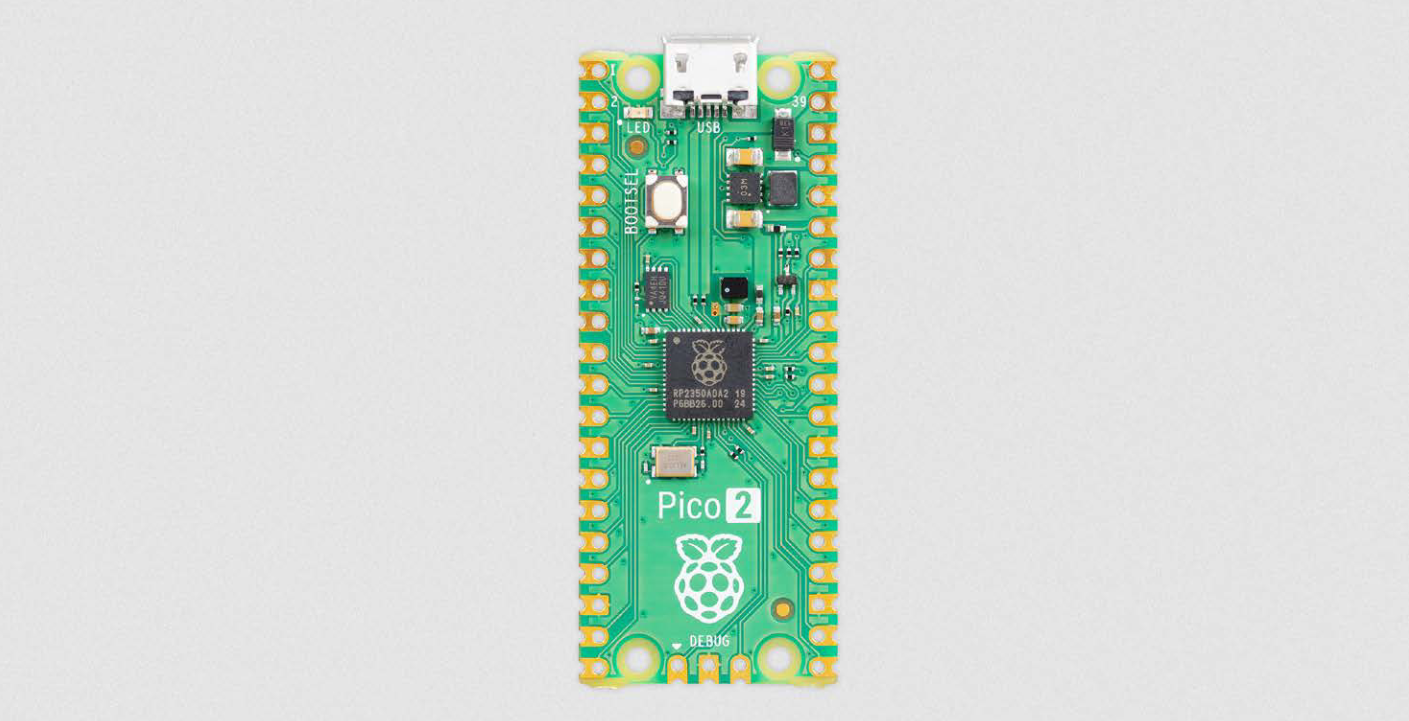This article was originally posted on my homepage.
The RP2040 microcontroller that is being used in the original Raspberry Pi Pico finally got a worthy successor: the RP2350! And with it Raspberry Pi released a new and improved version of the Pico, fittingly named the Raspberry Pi Pico 2. This is a big change for the Open Gamma Detector project, because it is going to substantially improve device speed and analog readout.

The Raspberry Pi Pico 2, sourced from their Pico 2 product brief, see below.
It's a drop-in replacement part for the original Pico, which means the pinout and sizing is the same as well as the software should be compatible with any changes, which is actually pretty huge. Ideally, the original Arduino IDE sketch can be reused without any modifications and the used pins on the device also remain the same.
The new RP2350 boasts double the SRAM (520 KB), double the onboard flash (4 MB) and more powerful ARM Cortex-M33 cores. With it finally comes an FPU for faster floating point calculations and they actually fixed the DNL issues with the ADC boosting its performance by 0.5 ENOB! That means I can finally drop all of the botched code for the DNL issue compensation.
The chip also adds a ton of new security features and optional RISC-V cores, which is very exciting to see, but not really relevant for the project. However, this is going to make the Pico 2 and RP2350 hugely more popular for all kinds of different IOT projects as soon as a wireless version comes out.
What I'm excited to see as well is how the power draw changes for the whole device and if the switching regulator on the board changed, which could affect the noise levels on the board and most importantly, the noise at the ADC voltage reference. As far as I'm aware they also changed sleep and dormant modes, which should make them a lot more useful and more low-power compared to before. Anyways, the new core architecture will definitely change power draw, I'm sure. Let's hope it's for the better :D
I have pre-ordered a Pico 2 now and I'm going to have a look at it as soon as it arrives. I'm certain it'll be a substantial upgrade in all of the relevant aspects to the project. I'll keep you updated!
Check out the product brief from Raspberry Pi (PDF): https://datasheets.raspberrypi.com/pico/pico-2-product-brief.pdf
Let me know what you think and how this is going to affect all kinds of different projects!
 NuclearPhoenix
NuclearPhoenix
Discussions
Become a Hackaday.io Member
Create an account to leave a comment. Already have an account? Log In.